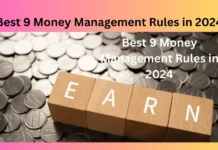Investing. It is a word filled with both excitement and unease. The idea of investing is intimidating for many. Many people are unsure of when to invest. “How do I start?” How much should I invest? Often, potential investors feel overwhelmed by the amount of information. Fear not! This guide will help you to navigate the world with confidence.
When should you invest?
1. Timing Is Everything
Investing doesn’t mean throwing money in the market when you feel like it. The timing of your investment is crucial to its success. When is the best time to invest? There is no universal answer. The timing of the market, economic conditions and your personal circumstances will all affect your decision.
2. The Power of Starting Early
It is a fact that the sooner you begin investing, the better. In the world of investment, time is your best ally. Early investing gives your investments the chance to grow faster through compounding. There’s no bad time to invest, whether you’re in the twenties or approaching retirement.
3. Market Situation and Opportunity
Before you dive in, consider the current market conditions. Consider factors such as market volatility, economic indicators and potential risks. Stay informed about the market conditions to be aware of opportunities.
How to invest wisely: Crafting your strategy
1. Clear goals
Define your investment goals before investing any money. Do you want to save for your retirement, a downpayment on a home, or the education of your children? Understanding your goals will help guide your investment strategies and allow you to make informed decisions.
2. Diversification is the Key
Diversification is one of the golden principles of investing. To reduce your risk, spread out your investments among different asset classes and industries as well as geographical regions. Diversification protects you from market fluctuations and increases the growth potential of your portfolio.
3. Stocks, Bonds and More
The options for investing are limitless. Stocks, bonds and mutual funds are just a few of the many options available. Each investment has its own risks and rewards. Consult financial advisors, if necessary, and select investments that are aligned with your financial goals and risk tolerance.
How much should you invest?
1. Assess your Financial Situation
Take a look at your current financial situation before deciding on how much you should invest. Take into account factors such as income, debt and savings. You can determine your investment capacity by assessing your financial situation.
2. Think Big, Start Small
It is not necessary to be a multi-millionaire to begin investing. Many successful investors started with modest amounts. As your financial situation improves, you can increase your investments over time. Start investing as soon as possible.
3. Automate your Investments
Automating your contributions is a great way to invest. Regularly set up automatic transfers to your investment account from your bank. This will not only keep your money in the same place, but it will also prevent you from spending the money on other things.
Conclusion
It may seem daunting to invest, but if you have the right strategy and knowledge, it can prove rewarding. Understanding when to invest and how to create a solid strategy for investing, as well as determining the amount to invest can help you achieve financial success. Do not forget that investing is a process, and not a race. Stay informed, remain disciplined and watch as your investments grow.
FAQs
Q1. Can I invest with a small amount of money?
A: Absolutely! Many platforms make it possible to invest with small amounts.
Q2. What do I need to know before I start investing?
A You’re ready to invest if you have a steady income, manageable debt and an emergency fund.
Q3. Should i invest in a downturn of the market?
A. While market downturns may present opportunities for buying, it is important to consider your investment goals and risk tolerance before making any final decisions.
Q4. Can you invest in more than one investment vehicle at the same time?
A: Absolutely! Diversifying investments among different asset classes is a great way to minimize risk and maximize the performance of your portfolio.
Q5. How frequently should I review my portfolio?
A. You should review your portfolio on a regular basis, but you shouldn’t make impulsive investment decisions based upon short-term fluctuations in the market. Review your portfolio’s progress and make any necessary adjustments to align it with your long-term objectives.















